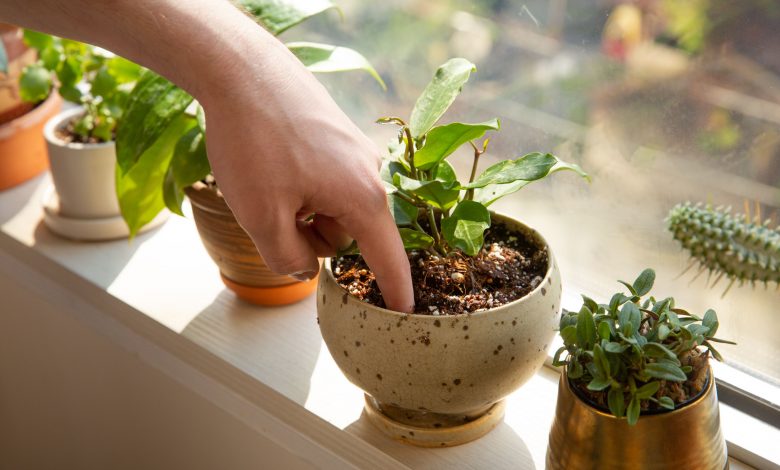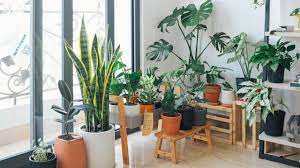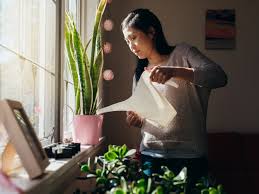How to (grow a specific plant) indoors
A Beginner's Guide: How to Grow Lavender Indoors

Each of us is impacted by this visual pollution and is left yearning for a stronger relationship with the natural world. The majority of our time is spent indoors. Interior plants are a great way to provide aesthetic appeal and a calming atmosphere while improving our overall well-being.
Furthermore, taking care of houseplants may be a fulfilling pastime and aid in air purification. Indoor plants capture and absorb a variety of contaminants in addition to converting carbon dioxide to oxygen. Many of these chemical compounds originate from commonplace objects found in our homes and workplaces, and they are released into our air through a process known as “off-gassing.” In this guide, we’ll explore the steps to successfully nurture this aromatic herb within the confines of your home. How to friendzone someone (The Ultimate Guide)
What are plants kept indoors?
According to Wikipedia: A houseplant, sometimes known as a pot plant, potted plant, or indoor plant, is an ornamental plant that is grown indoors. As such, they are found in places like residences and offices, mainly for decorative purposes. Common houseplants are usually tropical or semi-tropical and are often epiphytes, succulents, or Plants grown indoors known as indoor plants. Many tropical plants, including palms, can survive in indoor spaces.

How are indoor plants planted?
Indoor plants are almost often already in pots, so planting is unnecessary. Usually, there are just two reasons why you should bring a plant indoors.
You will need to transplant your plant into a larger container if it becomes too huge.
You would have to plant the bulbs yourself to grow them inside.
1. Selecting the Right Variety:
Before diving into the cultivation process, it’s essential to choose the right type of lavender for indoor growing. English lavender (Lavandula angustifolia) varieties such as ‘Munstead’ or ‘Hidcote’ are popular choices due to their compact size and suitability for container cultivation. These varieties also tend to have a more manageable growth habit, making them ideal for indoor settings. How to friendzone someone (The Ultimate Guide)
2. Providing Adequate Light
Without a doubt, one of the most crucial components of a plant is light. Massive phototaxis, or movement in reaction to light, allows those green leaves to function as enormous solar panels, positioning themselves to often absorb as much sun as they require. Take into account the lighting in your flat, home, or room before deciding on a plant that you truly desire. Next, choose fewer options.
Lavender plants thrive in bright, indirect light. Place your pots near a south-facing window where they can receive at least 6-8 hours of sunlight daily. If natural light is limited, supplement with grow lights to ensure optimal growth. Rotate the pots regularly to promote even exposure to light and prevent leggy growth.
3. Choosing the Right Container and Soil
Select well-draining containers with sufficient drainage holes to prevent waterlogging, as lavender is susceptible to root rot in overly wet conditions. Use a lightweight, sandy potting mix with added perlite or coarse sand to improve drainage. Avoid heavy, water-retentive soils that can lead to moisture-related issues.
4. Watering Wisely
Water is another essential element for plant life; even plants that thrive in the desert, such as cacti and many succulents, eventually require irrigation; yet, we sometimes fail to consider the reasons behind a plant’s need for water. Water is essential to a plant’s growth and metabolism, among other physiological functions. How to Attract a Leo Man (Effective Ways)

Water in a plant can be transported, much like rivers can. Many of the inorganic elements found in nature may be transformed by plants into nutrients, which can then be transformed into organic molecules that humans frequently ingest for sustenance. This is accomplished by altering the osmotic pressure of cells and using water as a carrier.
Lavender prefers slightly dry conditions, so it’s crucial not to overwater. Allow the soil to dry out partially between waterings, and water deeply when needed, ensuring that excess water drains freely from the bottom of the pot. Avoid wetting the foliage to prevent fungal diseases. During winter, reduce watering frequency to mimic the plant’s dormant period.
5. Maintaining Optimal Humidity and Temperature
An often overlooked aspect of plant health is humidity or the amount of water vapor in the air. For those of us in the Northeastern United States, humidity is mostly something we consider during the winter, especially when our houses start to resemble the Sahara Desert.
Dry air will frequently cause plants to “wick” away water, increasing transpiration. This implies that water must be supplied, either by more regular watering or by using other techniques, such as misting, to restore humidity surrounding a plant.
Lavender thrives in moderate humidity levels and prefers temperatures between 60-70°F (15-21°C) during the day and slightly cooler at night. Indoor environments can often be drier, especially during winter when heating systems are running, so consider using a humidifier or placing a tray filled with pebbles and water beneath the pots to increase ambient moisture.
6. Food/Fertilizer
As I mentioned earlier, the soil may provide a plant with the much-needed nutrients it needs, but since the majority of our plants are grown indoors—that is, in planters—they aren’t exchanging as many resources as they would if they were outside. This implies that soil will frequently need to be renewed, and fertilizing a plant is the most common way to achieve this. But the worst error anyone can make is fertilizing a plant with too much, or sometimes not enough, fertilizer. More fertilizer might seem to aid in a plant’s development, but in some situations, it can impede the uptake of particular nutrients, such as phosphorous, which is necessary for protein synthesis, cell division, and growth.
Although fertilization is not usually necessary during the off-growing season, it is nevertheless crucial to know how plants want to be fertilized and that, for the most part, very little medium is used. I still have to get the hang of maintaining a home fertilization regimen, I admit. Setting up a calendar and recording each plant’s requirements are essential components of that, and they will be covered in a later post.
To prevent excessive leaf growth at the expense of flowers, fertilize lavender sparingly. Use a balanced, water-soluble fertilizer diluted to half-strength once a month during the growing season (spring through early fall). Avoid fertilizers high in nitrogen, as they can promote lush foliage but inhibit flowering.
7, Dormancy
Similar to people, most plants need to go through a dormant phase, during which time their development almost completely stops. This varies from plant to plant and usually happens—though not always—after the plant has flowered. Furthermore, other plants—like some bulbs, which require no light, water, fertilizer, or even warmth—need to be in a dormant condition to blossom again year after year. Dormancy occurs even in succulents—a subject for a future post—and in certain taxa, it differs between summer and winter dormancy. Learn when a plant turns dormant when you purchase one; it will help you take better care of it.
8. Pruning and Harvesting
Regular pruning is essential to maintain the plant’s shape, encourage bushiness, and prolong flowering. Pinch off spent blooms and trim back leggy growth to promote new growth from the base. Harvest lavender stems for culinary or aromatic purposes when the flowers are in full bloom but before they begin to fade. Hang the harvested stems upside down in a dark, well-ventilated area to dry.
Conclusion:
Growing lavender indoors allows you to enjoy the beauty and fragrance of this versatile herb year-round, regardless of your gardening space limitations. By providing the right growing conditions – adequate light, well-draining soil, proper watering, and occasional pruning – you can cultivate healthy and vibrant lavender plants that will not only enhance your indoor environment but also provide an abundance of aromatic blooms for various uses. With patience and care, you’ll soon find yourself reaping the rewards of your indoor lavender garden.




